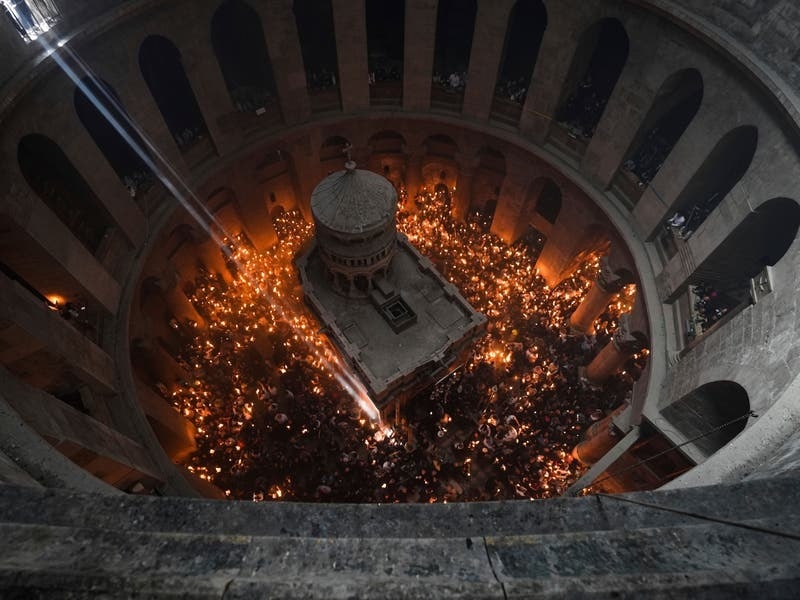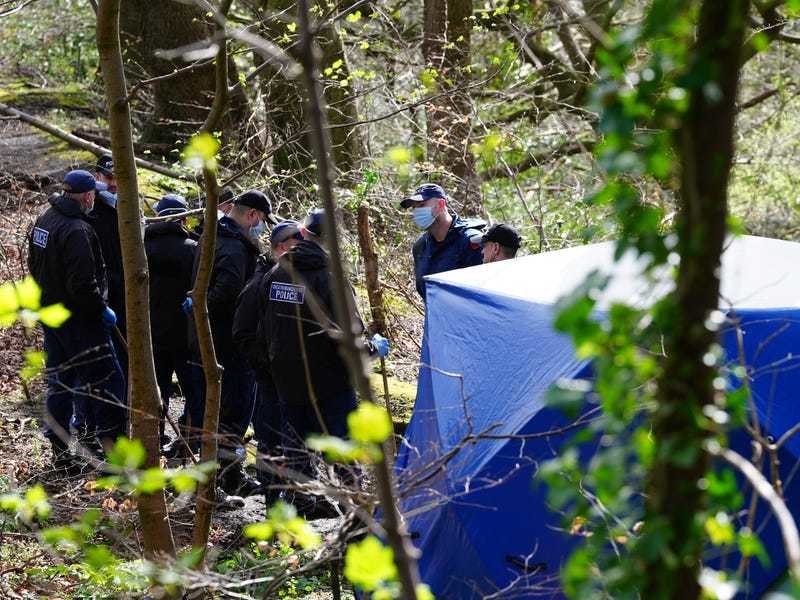Christian worshippers have thronged the Church of the Holy Sepulchre in Jerusalem to celebrate the ceremony of the “Holy Fire”, an ancient ritual that sparked tensions this year with Israeli police.
In the annual ceremony that has been observed for over a millennium, a flame taken from Jesus’ tomb is used to light the candles of fervent believers in Greek Orthodox communities near and far. The devout believe the origin of the flame is a miracle and is shrouded in mystery.
On Saturday, after hours of anticipation, a priest reached inside the dim tomb and ignited his candle.
Each neighbour passed the light to another and, little by little, the darkened church was lit by tiny patches of light, which eventually illuminated the whole building.

But for the second consecutive year, Israel’s strict limits on event capacity dimmed some of the exuberance.
In some cases, pushing and shoving escalated into violence. Footage showed Israeli police dragging and beating several worshippers, thrusting a Coptic Priest against the stone wall and tackling one woman to the ground.
At least one older man was taken away in an ambulance.
Israel has capped the ritual to just 1,800 people. The Israeli police say they must be strict because they are responsible for maintaining public safety.

Authorities say they are determined to prevent a repeat of the tragedy.
But Jerusalem’s minority Christians – mired in the Israeli-Palestinian conflict and caught between Jews and Muslims – fear Israel is using the extra security measures to alter their status in the Old City, providing access to Jews while limiting the number of Christian worshippers.
The Greek Orthodox patriarchate has lambasted the restrictions as a hindrance of religious freedom and called on all worshippers to flood the church despite Israeli warnings.
As early as 8am, Israeli police were turning back most worshippers from the gates of the Old City – including tourists who flew from Europe and Palestinian Christians who travelled from across the occupied West Bank, directing them to an overflow area with a livestream.
Angry pilgrims and clergy jostled to get through while police struggled to hold them back, allowing only a trickle of ticketed visitors and local residents inside. Over 2,000 police officers swarmed the stone ramparts.

Chartered planes will ferry the flickering lanterns to Russia, Greece and beyond.
Friction over the Orthodox Easter ritual has been fuelled in part by a rare convergence of holidays in Jerusalem’s bustling Old City.
A few hundred meters away from the Church of the Holy Sepulchre, Muslims fasting for the 24th day of the holy month of Ramadan were gathering for midday prayers at the Al-Aqsa mosque, the third-holiest site in Islam.
Earlier this week, tens of thousands of Jews flocked to the Western Wall during the Passover holiday.
Tensions surged last week, when an Israeli police raid on the Al-Aqsa mosque compound, Jerusalem’s most sensitive site, ignited Muslim outrage around the world. The mosque is the third holiest site of Islam.
It stands on a hilltop that is the holiest site for Jews, who revere it as the Temple Mount.
Israel captured the Old City, along with the rest of the city’s eastern half, in the 1967 Middle East war and later annexed it in a move which was not internationally recognised. Palestinians claim east Jerusalem as the capital of their hoped-for state.






